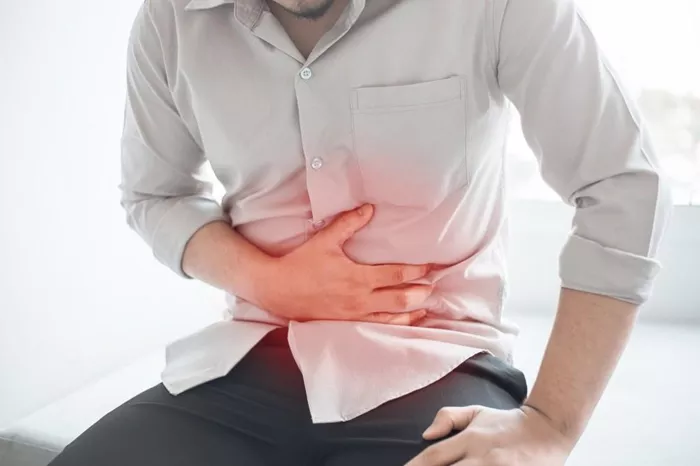An enlarged prostate, also known as benign prostatic hyperplasia (BPH), can cause a range of uncomfortable symptoms, including painful urination, frequent urges, and difficulty emptying the bladder. While medication and lifestyle changes can help manage these symptoms, finding effective pain relief methods is crucial for improving quality of life. In this article, we’ll discuss 5 best pain relief options for men dealing with an enlarged prostate, providing practical solutions that can help ease the discomfort.
1. Medications: Alpha Blockers and 5-Alpha-Reductase Inhibitors
One of the most common approaches to managing pain from an enlarged prostate is through prescription medications. Alpha blockers like tamsulosin and alfuzosin work by relaxing the muscles around the prostate and bladder neck, making urination easier and less painful. Another category of medication is 5-alpha-reductase inhibitors, such as finasteride and dutasteride, which help shrink the prostate by blocking the hormone responsible for its enlargement.
While medications can provide significant relief, they may take some time to show results and can come with side effects such as dizziness or reduced libido. Always consult your doctor to determine the best medication for your specific symptoms.
2. Natural Supplements: Saw Palmetto and Beta-Sitosterol
If you prefer a more natural approach, saw palmetto is one of the most widely studied supplements for treating symptoms of BPH. Saw palmetto may help reduce the size of the prostate and relieve discomfort by blocking the effects of certain hormones. Another option is beta-sitosterol, a plant-derived compound that has been shown to improve urinary flow and reduce the frequency of nighttime urination.
Although these supplements are available over the counter, it’s important to speak with your healthcare provider before starting any supplement regimen, as they may interact with other medications or cause side effects.
3. Heat Therapy: Prostate Massage and Thermal Therapy
Heat therapy can be an effective way to relieve the discomfort associated with an enlarged prostate. One common technique is prostate massage, which involves gently massaging the prostate to improve blood flow and reduce inflammation. This method may also help relieve pain and pressure in the pelvic area.
Another option is thermal therapy, where heat is applied directly to the prostate through various methods, such as microwave therapy or water-based therapy. These treatments aim to shrink prostate tissue and relieve pressure on the urethra, improving urine flow and reducing pain.
4. Lifestyle Changes: Diet and Exercise
Making certain lifestyle changes can also help reduce symptoms of an enlarged prostate and provide long-term relief. A healthy diet rich in fruits, vegetables, and healthy fats can promote prostate health and reduce inflammation. Foods high in antioxidants, such as tomatoes (rich in lycopene) and green tea, may be particularly beneficial for men with BPH.
Regular exercise is another important factor. Engaging in physical activity, especially pelvic floor exercises like Kegels, can help strengthen the muscles around the prostate and improve urinary control. Maintaining a healthy weight can also reduce pressure on the prostate and bladder, alleviating some of the discomfort associated with BPH.
5. Surgical Options: Minimally Invasive Procedures
For men who experience severe pain or when other treatments fail to provide relief, minimally invasive surgical options may be considered. One common procedure is transurethral resection of the prostate (TURP), where part of the prostate is removed to relieve pressure on the urethra and improve urine flow. Another option is laser therapy, which uses focused light to remove excess prostate tissue.
These procedures are typically performed under general or local anesthesia and are effective in providing long-term pain relief. However, they may carry risks and require recovery time, so it’s important to discuss the benefits and potential side effects with your doctor.
Conclusion
Managing pain from an enlarged prostate requires a comprehensive approach that includes medication, lifestyle changes, and, in some cases, surgical options. It’s essential to work closely with your healthcare provider to determine the best treatment plan for your specific symptoms. By incorporating natural supplements, adopting a healthy diet and exercise routine, and considering medical interventions, you can significantly improve your quality of life and reduce the discomfort associated with an enlarged prostate.
FAQs
1. Can exercise help with an enlarged prostate?
Yes, regular exercise can improve prostate health and reduce the symptoms of BPH. Pelvic floor exercises like Kegels, as well as maintaining a healthy weight, can alleviate pressure on the prostate and improve urinary control.
2. Is surgery the only option if medications don’t work?
Surgery is not always necessary, but for severe cases where other treatments have failed, minimally invasive procedures like TURP or laser therapy can provide effective long-term relief from BPH symptoms.
3. Are natural supplements like saw palmetto safe to use with other medications?
While saw palmetto is considered safe for most people, it’s important to consult your doctor before using any supplement, especially if you are on other medications, as interactions may occur.
Related topics:
- Can An Enlarged Prostate Cause Pain?
- What Is The Best Prescribed Medication For Enlarged Prostate?
- What Problems Can An Enlarged Prostate Cause?


